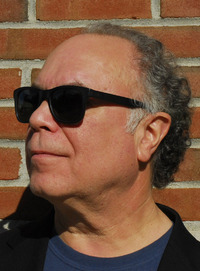THE SOUND. THE GUTS. THE GLORY. AN ENTHUSIAST'S GUIDE TO ROAD AMERICA.
 Monday, June 19, 2017 at 08:08AM
Monday, June 19, 2017 at 08:08AM Editor's Note: Even though we ran Peter's "Enthusiast's Guide to Road America" column just a couple of weeks ago, we felt it was appropriate to run it again for the enthusiasts heading to Elkhart Lake for this coming weekend's IndyCar race at Road America. Peter will return next week with a new "Fumes" column. -WG
Editor's Note: In preparation for the summer racing season, Peter is revisiting one of his favorite subjects today - Road America. He tells you what to see, where to go and what not to miss. Enjoy! -WG
Detroit. Road America, the 4.048-mile jewel of a track - "America's National Park of Speed" - carved out of Kettle Moraine country about halfway between Green Bay and Milwaukee, is the finest road racing circuit in the U.S. For many enthusiasts, Road America is a state of mind as much as it is a destination. History oozes out of the magnificent circuit and the postcard town of Elkhart Lake, as it is one of three places - along with Watkins Glen and Pebble Beach - that hosted open road sports car racing in the early 50s. For first-time visitors I highly recommend that you take the time to check out the historic roadside markers arrayed in the town and along the roads surrounding it, because it is one of the birthplaces of sports car racing in this country.
The permanent track was the dream of Clif Tufte, a trained civil engineer who walked the 525 acres of Wisconsin farmland and laid out the track himself. Tufte spent almost a year planning Road America and his dream became a reality when the track opened in April 1955. By September 10, 1955, the track's first SCCA national race weekend was held. One of the most amazing things about Road America is that Tufte's visionary layout has remained unchanged ever since, which is pretty incredible when you think about what has happened to other tracks over the decades since.
Everyone who goes to Road America has a story, because they've usually been attending races there for years, or decades, as the case may be. So I'm presenting a few high points for viewing the action at the track only as a suggestion, not a be-all and end-all proclamation. People inevitably find their own favorite places at the track the first time they go there, so what follows are a few of mine.
1. Stand along the fence on the front straight on the outside of the track just north of the the start/finish line. You can get remarkably close to the cars as they crest the massive hill on the front straight and blast by. It will get your attention real quick, trust me. Just for the record, cars reach their top speed at three different places per lap on the track, which is why it is so damn fast, and that is the end of the front straight, the end of the Moraine Sweep going into Turn 5, and at the end of Kettle Bottoms going into Canada Corner (Turn 12).
2. Watch on the outside of Turn 1. You can see the cars braking and setting up for the fast, sweeping right-hand corner. And yeah, you can see who's going fast just by the way they get through here.
3. Turn 3 is another favorite spectator area. The cars come over the hill and head down into the right-hand sweeper, which is a quicker corner than it looks at first. It's extremely important to get through there right, too, because it pours on to the second top speed section: the Moraine Sweep.
4. Walk through the woods and watch the Moraine Sweep and the cars braking into Turn 5. Before the FIA catch-fencing was installed (a sad day for Road America purists) you could stand at one of the fastest places on the entire circuit and watch the cars just pound by, with nothing but a low guard rail between you and the track. I distinctly remember watching the Can-Am cars here, with the sun glinting off of their huge rear wings as they powered by at 190MPH plus. The Sound. The Guts. The Glory. There was just nothing like it then, and it's still fantastic to this day.
5. Keep walking along the outside of the track down to Turn 5. Watching the drivers stand on their brakes going into Turn 5 is a sight to behold, especially the Indy cars on their qualifying laps. Then stand by the fence or sit in the bleachers at Turn 5. There's a reason that it is one of the most popular viewing places at Road America. Stuff happens there.
6. Make your way to the top of the hill at Turn 6. You can watch on the inside of the corner and see the cars heading to Turn 7 and then Hurry Downs. Or, you can sit at the outside of Turn 6 under the trees as the cars blast under the Corvette bridge and crank left through Turn 6. Either way is good, especially on the outside, because the cars are right there in front of you. As in close.
7. Turn 7 (and Hurry Downs) has a hilltop viewing area. It's cool, but walk down to the fence and position yourself so you can see the cars coming out of 7 hard on the gas. It's an awesome view.
8. Turn 8 is the hard left after Hurry Downs. I like to position myself on the inside of this corner (although other people swear by the viewing area on the outside of the track here) and watch the drivers do their hard braking into this corner and then power out for the set-up into the famous Carousel Corner.
9. I like to position myself on the outside of the track (just past the Johnsonville bridge) to see the drivers commit to the turn-in to get around the Carousel. The inside view of this corner by the main camping ground is really good too.
10. You can walk around and watch the cars power out of the Carousel below, but now there's a foot bridge (the Continental Tire Bridge) that allows you to walk down and get a fantastic view of the infamous Kink, the most ball-jangling corner in all of American road racing. I recommend you go down there for qualifying, too, because it will give you a renewed appreciation for the concept of being on The Edge.
11. The spectator viewing area on the outside of Turn 12 (make sure you have good hiking shoes on) is another fan favorite because you can see the cars approaching out of Kettle Bottoms (the third place on the circuit where the cars reach top speed) and the drivers doing heavy braking for 12. There's a reason people congregate here. There's action galore for one thing, but it's the sound that's notable here, because it seems to hang in the trees down there. They don't call the area immediately after Turn 12 Thunder Valley for nothing. It's a beautiful thing.
12. The new spectator viewing on the inside of Turn 12 is a must see too. You can walk all the way down to see the exit of The Kink from this position, or you can park yourself on the inside of the corner and watch the heavy braking. And the sound will knock your socks off.
13. I like to stand up on the little hill overlooking the Bill Mitchell Bend (it used to be the Bill Mitchell bridge, another sad day for Road America purists), looking down on the cars as they get through Turn 13. The other place to watch here is on the inside of the track, from the paddock side. Then there's the hilltop viewing area that overlooks the entire north side of the track where you can see Turn 5, Turns 13 and 14, and the cars powering up the hill on the main straight. Some people never leave from this spot.
14. I like to watch on the outside of Turn 14 because you can see the cars emerge from the Bill Mitchell Bend, approach Turn 14, get through the corner and blast up the hill. Faster through this corner means more top speed at the end of the front straight, and the good drivers always shine here. You can also see who peels off for the pits from this vantage point too.
15. And I should mention one other great vista, and this is from the Gear Box concession stand at the northern edge of the paddock. Besides having the best food at the track (which is saying something because Road America has the best track food in the country), you can see Turn 5, Turn 13 and Turn 14 here, plus watch as the cars blast up the hill toward the start/finish line. It's all good.
No, not the definitive guide by any means, just my favorite viewing areas at my all-time favorite track.
Road America has everything: a state park-like setting, a fantastic - and blistering fast - track layout unaltered since Day One, authentic sports car racing history and a postcard town to go with it, a beautiful new Road America store, and genuine, knowledgeable racing enthusiasts who share a common bond and appreciate what the track represents in this graceless age of instant gratification.
If you've never been you need to go, and if you're going back this summer, then I don't need to say anymore. Have fun and enjoy one of this country's greatest treasures: Elkhart Lake's Road America.
P.S. When you go into the town of Elkhart Lake there are two must-see stops: The bar at Siebkens. And the Off The Rail coffee shop. You can thank me later.
And that's the High-Octane Truth for this week.
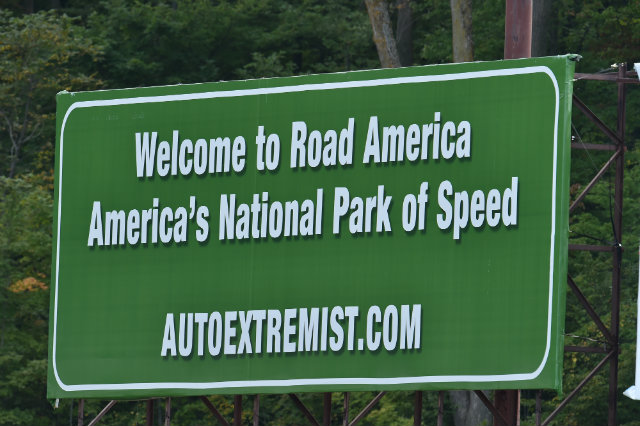
Editor's Note: Many of you have seen Peter's references over the years to the Hydrogen Electric Racing Federation (HERF), which he launched in 2007. For those of you who weren't following AE at the time, you can read two of HERF's press releases here and here. And for even more details (including a link to Peter's announcement speech), check out the HERF entry on Wikipedia here. -WG
Publisher's Note: As part of our continuing series celebrating the "Glory Days" of racing, we're proud to present a noteworthy image from the Ford Racing Archives. - PMD
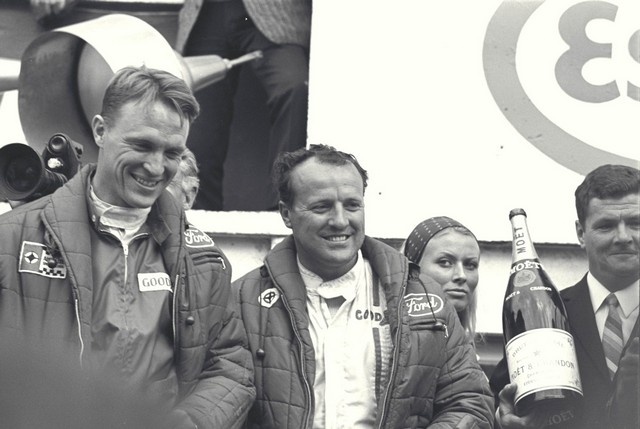
(Photos courtesy of the Ford Racing Archives)
Le Mans, France, June 7, 1967. Dan Gurney and A.J. Foyt, two of America's all time motor racing greats, grin broadly after winning the 24 Hours of Le Mans in their No. 1 Shelby American Ford Mk IV. For Gurney and Foyt, who won by a margin of four laps over the No. 21 Ferrari 330 P4 driven by Ludovico Scarfiotti/Mike Parkes, it was a tremendously satisfying win. Before the race the snobbish European motor racing press had scoffed at the idea that this unlikely duo had even the slightest chance of winning because though they had tremendous respect for Gurney, they felt that Foyt wasn't up to the task. They were sadly mistaken. Gurney devised a brilliant race strategy that revolved around being disciplined in the car and conserving their Mk IV for the entire 24 Hours; and Foyt not only deferred to Gurney's considerable expertise and bought into it, he helped execute the strategy to perfection. It was a hugely popular win. For many insider's in the Ford racing effort, the 1967 win was even more satisfying than the first Ford win in 1966, when an orchestrated 1-2-3 finish by Ford executives was botched, costing Ken Miles and Denny Hulme the win. Miles, who was absolutely key to the Shelby American success over the years and who did most of the development driving of the Ford "J-car" (which would become the Mk IV), lost his life testing that prototype at Riverside International Raceway the previous August. Miles was said to have remained bitter about what had happened at Le Mans right up until the day of his death. The All-American Gurney/Foyt win is, to this day, considered to be the greatest achievement in international racing by an American manufacturer. Eleven days later, on June 18, 1967, Gurney made history again when he drove his beautiful No. 36 Eagle-Weslake V12 T1G to victory in the Belgian Grand Prix. No American driver/car combination had won a Grand Prix since 1921 and no American driver had ever done it with a car of his own construction. It would remain the only win for the Eagle in Formula 1 racing.
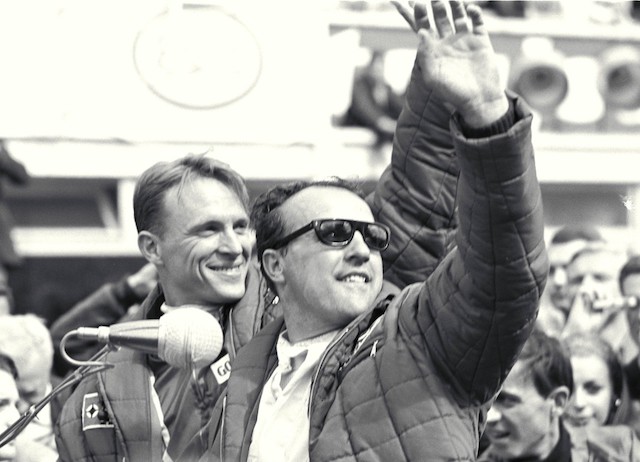
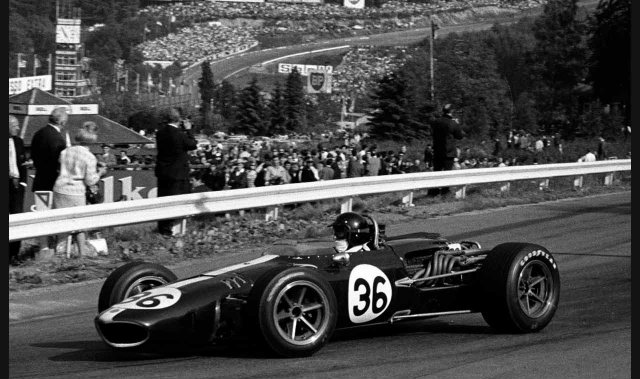 (Photo courtesy of All American Racers)
(Photo courtesy of All American Racers)

